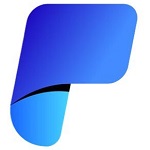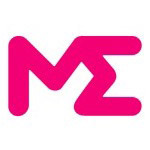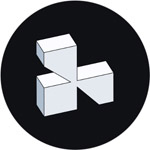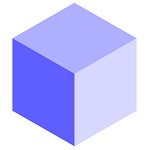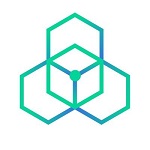Multi-Chain Platform
| Projects | Status | Date start | Raised | Launchpad | Ecosystem | X score | Interest lvl | Industry | ||
|---|---|---|---|---|---|---|---|---|---|---|
ICO Ongoing | Nov 21, 2024 | $2M | Exchanges & Wallets +2 | |||||||
| TBA | $910M | Gaming +5 | ||||||||
IDO | TBA | Multi-Chain Platform +4 | ||||||||
| TBA | Crowdfunding & Lending +4 | |||||||||
ICO | TBA | Exchanges & Wallets +1 | ||||||||
| TBA | $6,9M | Multi-Chain Platform +3 | ||||||||
ICO Past | Feb 27, 2025 | Multi-Chain Platform +1 | ||||||||
IDO | TBA | Blockchain +3 | ||||||||
| TBA | $26M | Blockchain +10 | ||||||||
IDO | Apr 11, 2025 | Software +6 | ||||||||
| Apr 11, 2025 | $23,6M | Blockchain +9 | ||||||||
IDO | Jun 20, 2025 | Marketing & Advertising +6 | ||||||||
| Jun 20, 2025 | Exchanges & Wallets +3 | |||||||||
IDO Past | Jun 04, 2025 | Software +6 | ||||||||
| Jun 04, 2025 | $9M | Multi-Chain Platform +1 | ||||||||
IDO Past | Feb 24, 2025 | Blockchain +1 | ||||||||
| Feb 24, 2025 | $11M | Blockchain +1 | ||||||||
| Feb 24, 2025 | $159,5M | Crowdfunding & Lending +7 | ||||||||
| Feb 24, 2025 | Multi-Chain Platform +2 | |||||||||
| Feb 24, 2025 | Blockchain +3 | |||||||||
| Feb 24, 2025 | $18M | Blockchain +4 | ||||||||
IDO Past | Feb 14, 2025 | Blockchain +4 | ||||||||
IEO Past | Jan 16, 2025 | $5M | AI +3 | |||||||
IDO | Jan 09, 2025 | Trading & Investing +3 | ||||||||
ICO Past | Jan 09, 2025 | Blockchain +3 | ||||||||
IDO Past | Dec 09, 2024 | $2,5M | Trading & Investing +3 | |||||||
IEO Past | Nov 15, 2024 | $8,5M | Multi-Chain Platform +3 | |||||||
IDO Past | Nov 13, 2024 | Privacy & Security +4 | ||||||||
| Nov 13, 2024 | $4,2M | Exchanges & Wallets +3 | ||||||||
IDO IEO Past | Aug 17, 2024 | $2,5M | Multi-Chain Platform +3 | |||||||
IEO Past | Aug 29, 2024 | Crowdfunding & Lending +3 | ||||||||
| Aug 29, 2024 | $16,5M | Data Analytics +2 | ||||||||
| Aug 29, 2024 | Exchanges & Wallets +2 | |||||||||
IEO Past | Jul 30, 2024 | $21,2M | Social +4 | |||||||
| Jul 30, 2024 | Finance +1 | |||||||||
| Jul 30, 2024 | $7M | Crowdfunding & Lending +4 | ||||||||
IDO Past | Jun 03, 2024 | Gaming +4 | ||||||||
IDO Past | Mar 27, 2024 | Crowdfunding & Lending +2 | ||||||||
IDO Past | Jan 17, 2025 | $0,16M | Crowdfunding & Lending +2 | |||||||
IDO | Mar 11, 2025 | $3,75M | Blockchain +3 | |||||||
| Mar 11, 2025 | Blockchain +1 | |||||||||
| Mar 11, 2025 | Exchanges & Wallets +2 | |||||||||
| Mar 11, 2025 | $65M | Blockchain +4 | ||||||||
| Mar 11, 2025 | $21M | Exchanges & Wallets +2 | ||||||||
ICO IDO Past | Oct 22, 2020 | $69,6M | Data Analytics +8 | |||||||
IDO Past | Mar 15, 2023 | Finance +2 | ||||||||
ICO IDO | Feb 06, 2023 | Mining +5 | ||||||||
IEO Past | Jul 22, 2024 | $18,5M | Exchanges & Wallets +3 | |||||||
IEO Past | Jan 20, 2025 | Exchanges & Wallets +3 | ||||||||
IDO Past | Apr 22, 2025 | $18,5M | Blockchain +2 | |||||||
Multichain platforms & blockchains
The problem, such as the lack of blockchain interoperability at the beginning of the industry, limited a number of user capabilities, including data sharing and asset transfers between each other, effectively resulting in limited innovation and low efficiency of blockchain technology.
This led to the emergence of interoperability as a solution that allows different networks to seamlessly interact with each other by acting as smart contracts across different blockchains. In other words, such solutions are called Multichain platforms.
Notably, the concept of multichain was first developed by Ignite (Tendermint). In 2017, the developers launched the Cosmos protocol, which provides blockchain interoperability. By enabling the use of modular blockchain tools, Ignite aimed to make it easier for more people to build their own blockchain and create a powerful ecosystem under Cosmos.
What is Multi-chain
The term “multichain” describes a project with several interconnected blockchains. This architecture allows users of different blockchains to interact without necessarily exchanging assets.
Note that at the application level, Multichain platforms are DApps that support the operation of multiple digital assets and functional parameters of different blockchains simultaneously. For example, Metamask crypto-wallet is actually a multichain platform, because it allows you to store and manage digital assets from blockchains such as; Ethereum, Binance Smart Chain, Optimism, Arbitrum, Polygon and many other ecosystems.
Multichain platforms at the blockchain level deserve special attention.
Note that multichain blockchains are often referred to as Layer 0 blockchains.
It is Layer 0 blockchains that are the basis for building other networks such as Layer 1 or Layer 2. In addition, blockchains with broader functionality for cryptocurrencies, NFTs and other digital assets are being built on the basis of multichain platforms.
What are multichain systems for
Multichain solutions overcome the limitations of individual blockchains and facilitate collaboration between disparate blockchain networks. At the same time, the development towards multichain solutions creates opportunities for DApps developers to reach new audiences and ecosystems.
While previously all these blockchains were isolated from each other, multichain bridges allowed users to move data and assets between different blockchain networks. As the technology improved, this became even more seamless, allowing the use of new, previously unavailable, functionality and liquidity from other networks.
Core components of Multichain solutions
To understand the concept of multichain platforms, let’s look at how L0 blockchains work:
The L0 architecture contains many mechanisms that interact with each other. This makes blockchains more efficient in operation. Meanwhile, the consensus layer is the main part, which is responsible for new blocks and transaction verification.
The network layer is a secondary mechanism that is responsible for direct communication and connecting nodes to each other. The third key component is the virtual machines, thanks to which the security of smart contracts is achieved, as well as their efficient functionality.
A fundamental addition to multichain solutions is Modular Design. Modularity keeps the underlying blockchain architecture intact. In turn, this enables developers to add new features and modify them. In addition, multichain platforms are designed to be incredibly scalable, so they can handle a huge number of transactions.
We can now see that multichain platforms refer to blockchains that allow other applications and systems to be developed on top of them.
Importantly, the multichain approach preserves the ability to program the layers and applications that are built on top of the underlying consensus. This opens the door for other blockchains to implement different functionality and use cases. Among other things, this model enables individual blockchains to coexist within a single ecosystem.
An example is the Cosmos blockchain, which supports interoperability between blockchains without compromising their security and reliability.
Ultimately, multichain platforms have two key advantages:
- Allow for improved scalability of the blockchain network, as each parallel blockchain can process its own transactions and contracts without constraints, which can lead to a reduced load on the underlying blockchain.
- Allow for more flexible and specialized blockchain networks that can be used for different purposes and tasks.
Incidentally, the Huobi report cited the following four characteristics that should be at the core of a multichain system:
- Ability to be modular, rapidly create new blockchains, and rapidly evolve ecological blockchains;
- Capability to ensure efficient interoperability of the first layer blockchains in the ecosystem, including asset and information blockchains;
- The ability to guarantee the underlying security of the entire multichain network;
- The ability to interact and manage multiple sub-ecosystems within a multichain network.
In addition, it should be noted that the tools that are involved in crosschain systems play an important role in the formation of multichain platforms. Since it is the crosschain concept that is responsible for helping users to transfer assets between blockchains.
Examples of multichain platforms
- Polkadot
- Chainlink
- Avalanche
- AAVE
- Injective
- Uniswap
Conclusion
Over the years, the blockchain industry has realized the much greater importance of joining forces rather than fighting each other. This is why the concept of multichain solutions is being applied to address key challenges faced by existing blockchain platforms such as scalability, efficiency and interoperability.
As we can see, the trend of multichain solutions is the result of a long time of studying and developing blockchain technologies and by combining m Combining the advantages of both approaches, we can get a more robust crypto ecosystem, which is expected to influence the future of the blockchain industry by attracting more attention and users.





